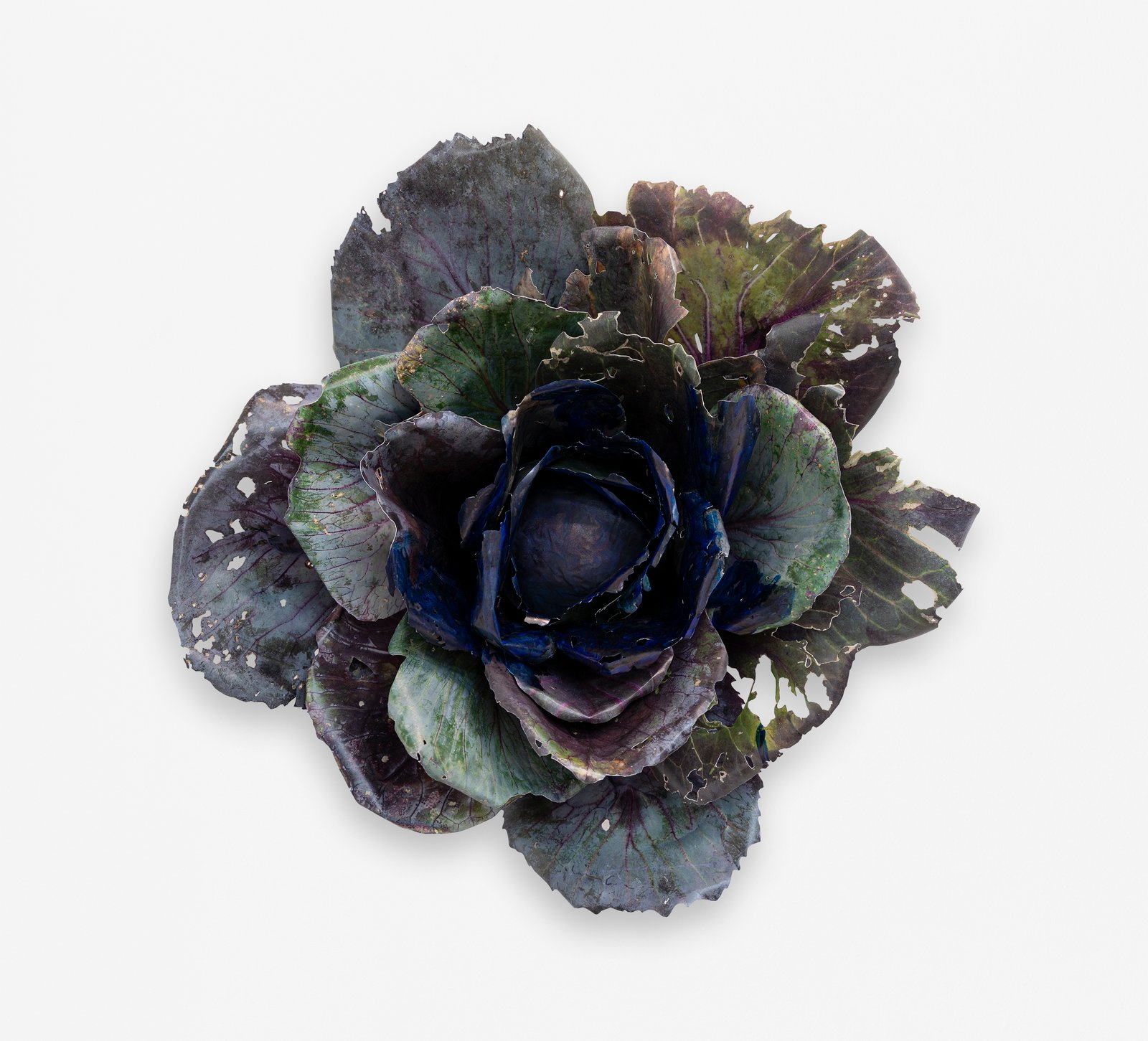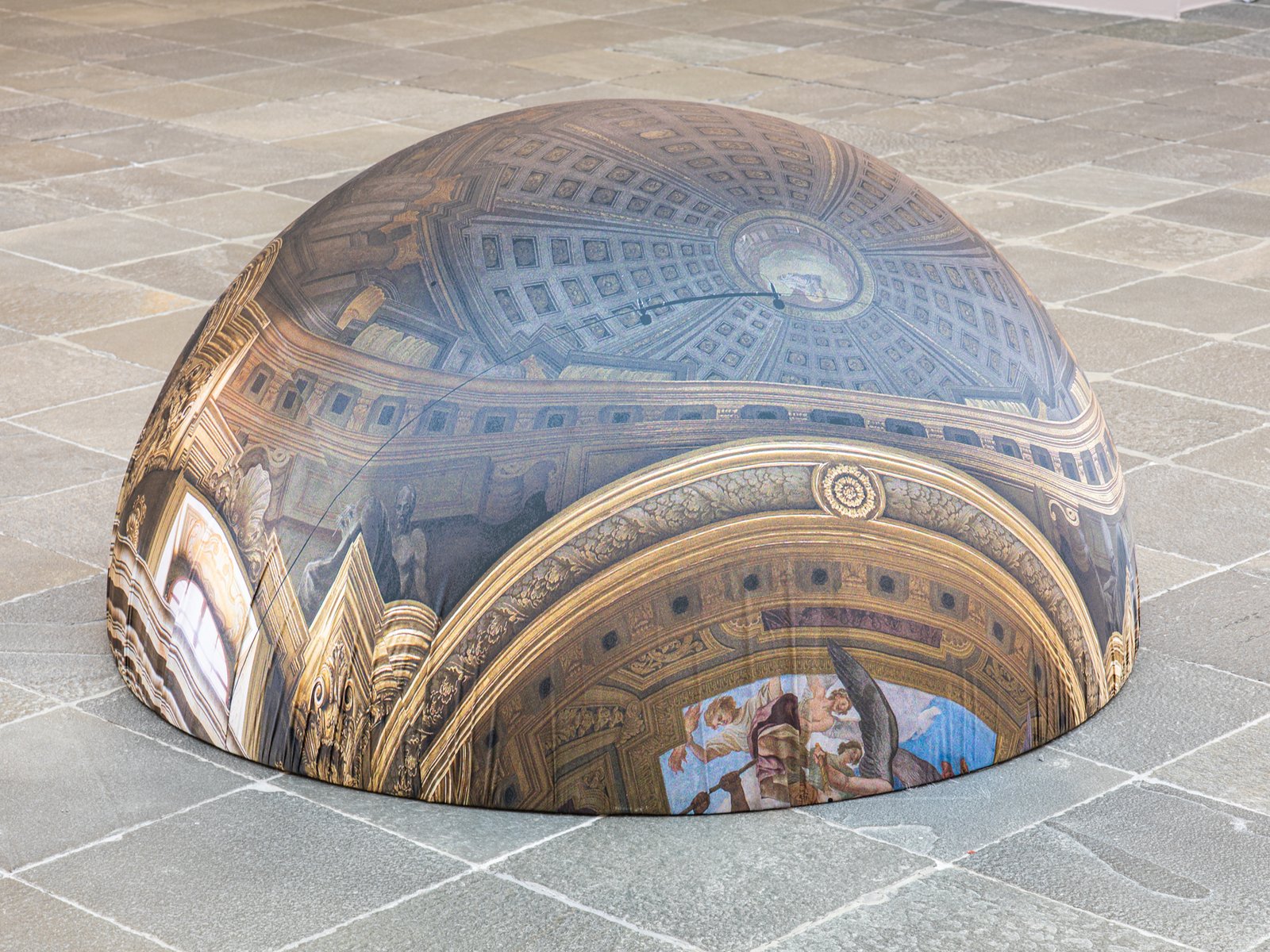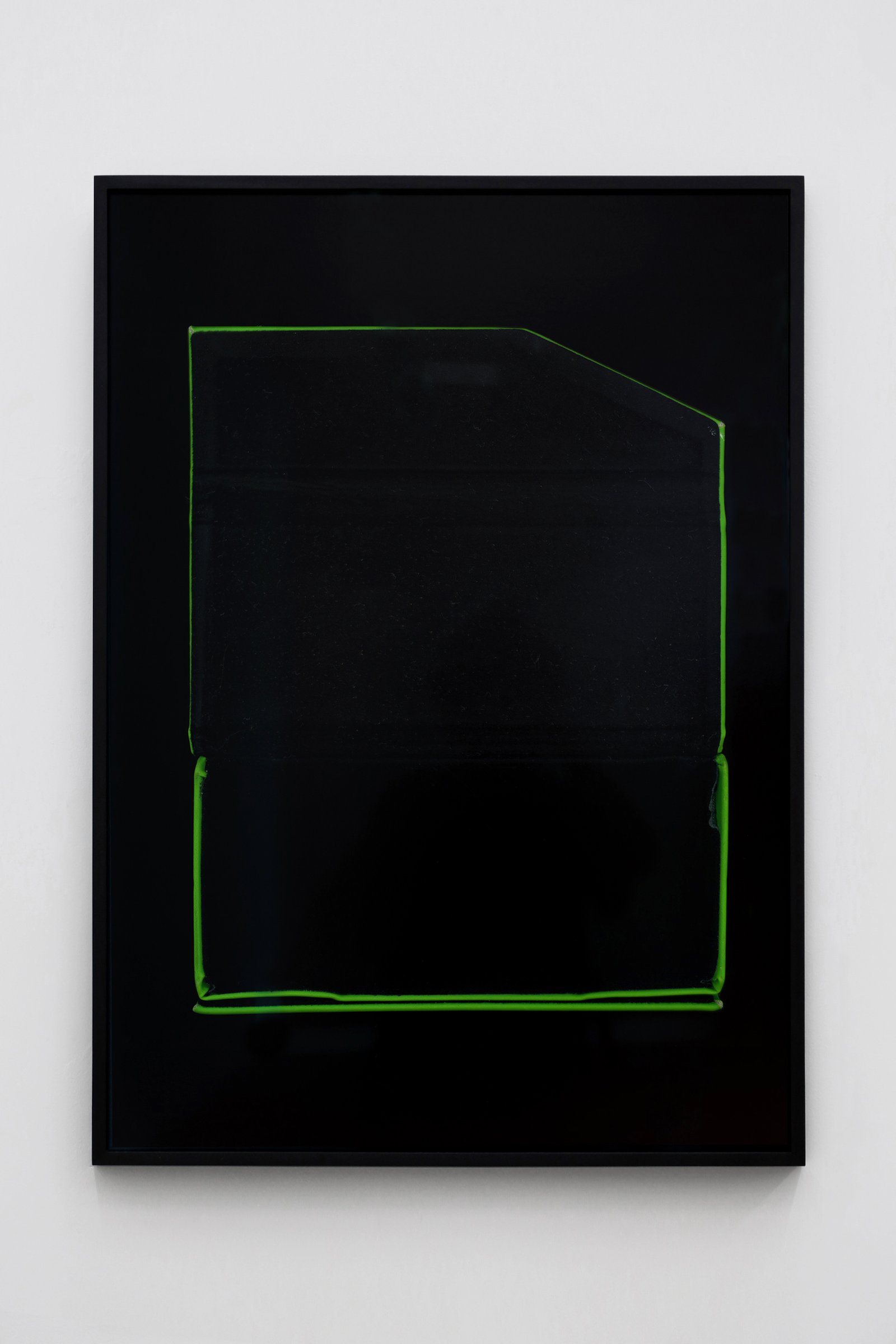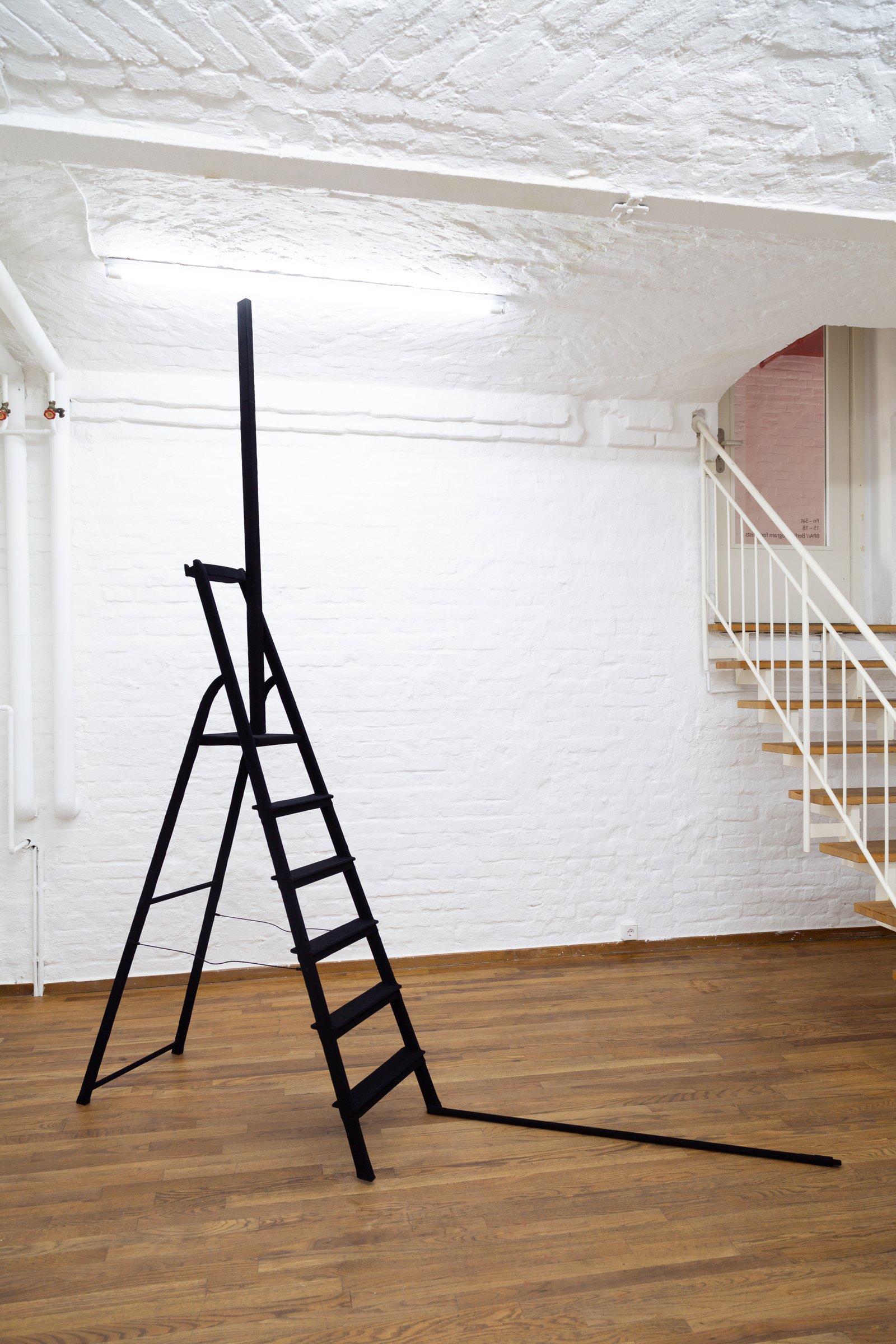Julija Zaharijević: voids of reality
Julija Zaharijevic focuses less on what is and more on what could be and thus alienates the perception of the everyday, the familiar.
One particular element is recurrent in Julija Zaharijević’s paintings, photographs, and sculptures: the round shape, which sometimes appears positively as a bulge or elevation, sometimes negatively as a hole, gap, or indentation. Whether in her Bellies paintings(2020), Cabbage sculptures(2021), trompe-l’œil model Goddess (2022) or her painterly Poison wall objects(2023) – a ring, circle, or sphere always focuses the viewer’s gaze in such a way that they seem to be drawn into some kind of void. “I wanted people to stare into space, the abyss, if you will,” says Zaharijević about her realistic replicas of cabbages, which were shown for the first time in 2021 in her solo exhibition “Oh no! The View” at the Georg Kargl Permanent Gallery in Vienna. The crumpled, snail-nibbled leaves, which are scans of real cabbage leaves cut into leaf shapes and pierced with holes, line the inside of the head, which is made from wrinkled newspapers and printed silk. “I was interested in the extent to which cabbage, a cheap and easy-to-grow food that has always been considered poor people’s food, can stand for something else, something symbolically charged. I use materials such as silk, and I hand-paint the backsides of the leaves in shimmering colors – effectively embedding elements of ‘high value’ into the cabbage, as a way of pushing to the fore the question of how value is created and understood. Furthermore, the role of manual labor and its visibility in creating value is also something that interests me.”

Even in sculptural works like these, Zaharijević is concerned with questions of image production that originate more from painting than sculpture. By processing materials such as paper, canvas, or rayon with painting media such as ink, acrylic, or oil paint, she produces a pictorial space that is not only realistic, but often also a play on illusionistic painting techniques. For example, when she transfers the diamond pattern of English Chesterfield seating furniture, which is often found in bourgeois social contexts such as gentlemen’s clubs, hotel bars, or law firms, onto the canvas. It is not only the application of paint that varies – sometimes it realistically imitates the sheen and wrinkled structure of brown leather (Poison (Brown), 2023), sometimes it produces an autonomous abstract painting (Chesterfield, 2023). Zaharijević also applies the capitoned buttons made of canvas in such a way that the diamond pattern either appears doubled (four diamonds that together form one large one) or is disturbed in its regularity resembling scars and wounds. Through painterly-sculptural appropriations such as these, the stately seating furniture undergoes a symbolic shift: from the signifier of a once fetishized luxury object, which is also an object of utility, to the artistic appropriation of a craft associated with this object, whereby the art object as a commodity is, of course, a fetish of its own kind.

In addition to such value-reflective gestures using the means of painting and sculpture, Zaharijević often resorts to printing processes and combines the resulting images with various objects, so that the impression of three-dimensionality simulated in the image corresponds to a real expansion in space. This double illusionism, reminiscent of Tony Oursler’s immersive video installations, is most evident in Zaharijević’s work Goddess (2022). She has printed a photo of the 18th century trompe-l’œil dome of the Jesuit Church in Vienna onto an artificial silk cloth stretched over a polystyrene hemisphere one and a half meters in diameter. The real dome illusion of the painting becomes a real dome in the form of a hemisphere, with Zaharijević’s trompe-l’œil being convex and thus negatively stretched in relation to the dome model, which has a perspective from bottom to top. The work, which was initially on display in 2022 in a version that was color-coordinated with the church painting in Zaharijević’s solo show “Modern Painting” at the Berlin art space Bbberlin, was remodeled by the artist 2024 in a slightly smaller version, titled Disillusioned, a copy. The motif now is in shades of blue and only printed in full saturation in some places, which is due to the fact that the image was used inverted. Comparable to the fading painting of Chinese vases over time, the print has a self-reflective quality, like a disillusioning copy of a painterly illusion.

This mise en abyme is typical of Zaharijević’s use of pictorial patterns, with which she wants to address certain expectations associated with painting in terms of how it deals with pre-painting reality. “I am trained to draw realistically, almost photorealistically,” says Zaharijević, who received a strictly academic art education in Belgrade before studying fine art in Paris and Vienna. “I always wanted everything I drew to look exactly like it does in reality.” Like all realism, however, her artistic examination of the things that surround her and that she depicts in various media is an abstraction, a generalizing operation. Modern Painting (2022), a series of scans of abstract color compositions that were also showed at Bbberlin, proves that these things include art historical references that have a certain Western ideal of beauty as their subject, as well as technological inventions of the 20th century. Referring to canonical works from the history of painting such as Manet’s Olympia or Lucian Freud’s Nudes on the one hand and the logos of airlines such as Lufthansa or EasyJet on the other, Zaharijević has put together different colored strips of fabric, which take up the dominant colors in these paintings and corporate self-images, to produce a collage. The serial and at the same time self-reflective nature of these prints does not so much put the individual image into perspective but frames its conditions of origin. They are, in other words, a postmodern replica of modernist painting traditions at the interface of technology and society, comparable to the sampling of images with an eyedropper in Photoshop.
The level of abstraction is even higher in Tamara’s Sunglasses Case, a series of scans and prints that the artist produced for her exhibition “Structure” 2023 at her gallery Eugster || Belgrade, which she conceived together with Tamara Grčić and which represent a continuation of her Modern Painting series. The black frames Zaharijević has chosen for her scans barely stand out from the pictures they surround. They too are immersed in deep black, with an object that is indefinable at first glance, of which the scans show different views, standing out from the background in matt black and bright green. The scans, whose monochrome flatness is strongly reminiscent of Neo-Geo abstraction and Pati Hill’s photocopied objects, reappear in the show as prints on rayon, which further enhances the repetition effect of the series. The object shown in the images is a sunglasses case Grčić gave to Zaharijević as a gift. The case, which is usually given to the sunglasses as a protective addition, comes to the fore here, revealing itself as the actual treasure. Zaharijević’s peculiar realism becomes even clearer in this work, as it stylizes the protective frame as a reality-forming structure, to pick up on the title of the show. “What we have decided on has become reality. But it could all look completely different. Reality is the product of something highly artificial,” Zaharijević comments on her interest in those things that have become second nature to many of us.

Her latest work can also be understood in terms of such processes of marking the unmarked, the presence of the absent: Unplayable (BPA// Raum) (2024), which she recently presented as part of a group show in the exhibition space of the BPA// Berlin program for artists, an artist-led organization, founded in 2016 by Angela Bulloch, Simon Denny, and Willem de Rooij, in which Zaharijević is currently participating. For this she converted objects of utility that belong to BPA// Raum (a ladder, a fluorescent tube packaging box, and a telescopic pole) into works of art by dressing them in adhesive velvet, a material with historical associations to nobility and luxury. Together, the three enwrapped objects form a sculpture, with the packaging box placed vertically on the ladder looking like an arm extended into the air and the telescopic pole placed on the floor like a foot-like extension of the ladder. Similar to classics of surrealism, such as Meret Oppenheim’s fur-covered cup or Man Ray’s sewing machine wrapped in a blanket and tied with a rope, Unplayable (BPA// Raum) seems to pose a riddle. This is also because the black velvet foil absorbs light and atmosphere and lends the objects wrapped in it a ghostly presence without hue and value. As a citation of gestures of formal reduction such as in minimal art and conceptual art, Unplayable (BPA// Raum) is also a reflection on the potential of the artistic method of reference in general. When does something become a work of art and what role does the referential linking of visual and economic value production play in this? Such considerations of translation, which are also characteristic of the appropriation practice of contemporary artists such as Stephen Prina or Gaylen Gerber (here, however, in the sense of an artistic incorporation of the work of other artists), arise anew in each changing context, which is why it is also mentioned in the title of every new version of the series.

While in Zaharijević’s older works the round shape in the form of the cabbage head, Chesterfield button, or church dome still evoked the effect of a seductive blank space, the omissions in her more recent works such as the Modern Painting seriesor Unplayable are the product of a reduced vocabulary of color and form. It is no longer positivity in the sense of the construction of a blank, but the deliberate omission, non-formulation of a center or focal point that is now decisive for the visual translation. This is also remarkable because the negative movement of abstraction makes it all the more clear that what sometimes attains the status of the self-evident is not self-evident per se. Does the velvety black with the green edges really represent a sunglasses case? Just what is it that makes the ladder (in a variation on the title of Richard Hamilton’s famous collage) so different, so appealing? By drawing attention to the conditions under which art is produced, Zaharijević focuses less on what is and more on what could be and thus alienates the perception of the everyday, the familiar. In doing so, she makes visible the voids of a reality in which, as the classic rule of Marxism states, profit can only be made from the unequally and unfairly remunerated working time of living people – a work-value relation that also and especially applies to the art object.
January 15, 2025
